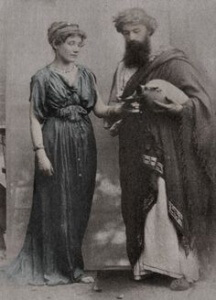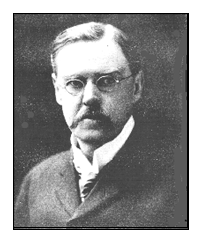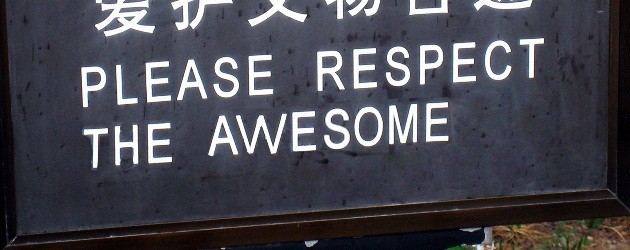Following on from my previous post of the top five over-rated magicians, is my list of the top five under-rated Golden Dawn magicians. It is possible that you have never heard of these people, mostly because they were so under-rated that historians ignored them, or as in some cases, unfairly judged them for the wrong reasons. Unlike the other post, photos of these unsung magical heros are rare, because GD historians either could not find them or did not think they mattered.
 1. Florence Farr: Although her reputation has improved thanks to the Women of the Golden Dawn book, actress Farr is often seen through the patronising light of Waite and tainted by the fact she had an unfortunate series of affairs with famous men (Yeats and Russell). However, as a magician she was one of the finest that the Golden Dawn produced. Its teachings were deeply soaked into her own writing and enabled her to create two significant magical schools. The first was the Sphere Group which was a regular pathworking group which made the Golden Dawn system very practical and the second was a mysterious Egyptian order which attracted some of the highest members of the group (which unfortunately did not survive her death). She was the Golden Dawn’s Praemonstrator in the absence of Mathers and it is telling that even Crowley could not find a bad word to say about her. She trained many in the Golden Dawn in basic acting skills to improve their ritual performance. Her move to Theosophy and dedication to Ponnambalam Ramanathan (and move to Ceylon) was less of a move away from magic than many thought. Ramanathan was believed by some Golden Dawn members to be a real secret chief.
1. Florence Farr: Although her reputation has improved thanks to the Women of the Golden Dawn book, actress Farr is often seen through the patronising light of Waite and tainted by the fact she had an unfortunate series of affairs with famous men (Yeats and Russell). However, as a magician she was one of the finest that the Golden Dawn produced. Its teachings were deeply soaked into her own writing and enabled her to create two significant magical schools. The first was the Sphere Group which was a regular pathworking group which made the Golden Dawn system very practical and the second was a mysterious Egyptian order which attracted some of the highest members of the group (which unfortunately did not survive her death). She was the Golden Dawn’s Praemonstrator in the absence of Mathers and it is telling that even Crowley could not find a bad word to say about her. She trained many in the Golden Dawn in basic acting skills to improve their ritual performance. Her move to Theosophy and dedication to Ponnambalam Ramanathan (and move to Ceylon) was less of a move away from magic than many thought. Ramanathan was believed by some Golden Dawn members to be a real secret chief.
 2. Dr R Felkin: Golden Dawn historians Francis King and Eric Howe have done their best to portray Felkin as a deluded nut-job who spoke to spirits and wasted a lot of time looking for Secret Chiefs. However Felkin was simply doing what the others in the Golden Dawn were doing only slightly better and with greater dedication. All of the chiefs were making psychic communications with inner plane beings and there is nothing that Felkin did which was any different from Westcott, Mathers, Horniman, Farr, Yeats or anyone else. Felkin did have his faults, he had a drinking problem, but he was devoted to magic and the Golden Dawn system. His version of the Golden Dawn system survived until the 1970s thanks to the fact he was able to make his vision survive his own death – something which is horrendously difficult to do. He developed and improved the system and set up an Order which facilitated further development. As my book Beyond the Sun points out. Felkin was not an unstable wimp, he was a Victorian Hero first as a missionary in Africa and then as a doctor in Havelock North. He was also respected by most of the Golden Dawn members. Much of the Golden Dawn that we see today exists because of Felkin.
2. Dr R Felkin: Golden Dawn historians Francis King and Eric Howe have done their best to portray Felkin as a deluded nut-job who spoke to spirits and wasted a lot of time looking for Secret Chiefs. However Felkin was simply doing what the others in the Golden Dawn were doing only slightly better and with greater dedication. All of the chiefs were making psychic communications with inner plane beings and there is nothing that Felkin did which was any different from Westcott, Mathers, Horniman, Farr, Yeats or anyone else. Felkin did have his faults, he had a drinking problem, but he was devoted to magic and the Golden Dawn system. His version of the Golden Dawn system survived until the 1970s thanks to the fact he was able to make his vision survive his own death – something which is horrendously difficult to do. He developed and improved the system and set up an Order which facilitated further development. As my book Beyond the Sun points out. Felkin was not an unstable wimp, he was a Victorian Hero first as a missionary in Africa and then as a doctor in Havelock North. He was also respected by most of the Golden Dawn members. Much of the Golden Dawn that we see today exists because of Felkin.
3. Neville Meakin: As far as unsung magicians go, Meakin was a significant figure who often fails to make any Golden Dawn history books. He was often seen as an adjunct to Felkin and tarred by the same King Howe brush. However, Meakin was a real adept, something that his contemporaries were prepared to acknowledge over and above Felkin. It is telling that Felkin used him as an ambassador to meet the European secret chiefs. Those who he met, such as Steiner, were prepared to roll over and give Meakin the goods. Like Felkin he was devoted to the Golden Dawn system, travelling to foreign places even while in poor health. He was a great ritualist and managed to create an entire Chivalric Order which was so well done that several fought over the chance to run it (Felkin won and the order is still running). It was is rumoured (not confirmed) that Meakin wrote the Golden Dawn portal ceremony to replace the terrible and short version churned out by Mathers. Certainly the ritual does show Meakin’s ritual flourishes. Tragically Meakin died young and it would have been interesting to see what would have become of him. Had he lived he would have certainly been in charge of the London version of the SM and that might not have broken up in the way that it did. He was also a more acceptable face of the later GD to those outside the Order.
4. Edward John Langford-Garston: Howe, Dion Fortune and Israel Regardie have managed to make AO Chief Captain Langford-Garston somewhat of a comedy character of late Golden Dawn history. This was mostly because he publically objected to a couple of books that a young Regardie wrote prior to joining the Golden Dawn which “revealed its secrets.” Fortune also did not like him much because he failed to spot her genius when she was a member of his AO order. Based on this, and his military record, meant he became seen as a Colonel Blimp character rather than the young and talented magician he was. The proof of the depth of his knowledge and ability can be seen in his writing which was first rate and difficult enough to ensure that it is ignored by those who don’t know to look out for them. His books on Theurgy and Alchemy are out-of-print and difficult to find but show the depth of practical knowledge he had. Rather than being a comic character he was a tragic individual who despite his many talents was never given a break by the fates. His businesses failed (through no fault of his own), along with relationships and all this took a toll on him resulting in his suicide. Had humanity been better at looking after its magicians he would have continued to be a valued resource.
5. Maya Transhall-Hayes: Transhall-Hayes was an AO chief who is responsible for the Dion Fortune approach to the Western Mystery Tradition. She was a co-chief with Berridge after the First World war and co-ruler with John Brodie Inness until his death. But that order was dying as quickly as its older members. Fortune was one of the newer members and taken under the wing of Transhall-Hayes. However, her star was well and truly eclipsed by the arrival on the London scene of Mina Mathers who set up her own group. Transhall-Hayes sent Fortune to spy on it in a series of events which resulted in the creation of the Inner Light. It is not clear when it happened but Transhall-Hayes quit the AO and buried her equipment in a cliff where in the 1960s it was revealed by sea erosion. But she did remain true to the contacts she developed in the Golden Dawn and soon before Fortune’s death she showed up and used her to bring through a new “non-elemental” order based around Moon, Sun and Star grades. This work, which was closely related to what these days is called polarity magic, appeared to be abandoned after Fortune’s death although some of it was integrated within the Inner Light. It was later published by Gareth Knight. According to Fortune, Transhall-Hayes was a formidable magician and one of the few who could force Fortune into a subordinate role. Her influence and ideas can be seen everywhere that Dion Fortune’s methods are emphasised (which is to say most of the British Western Mystery Tradition).

Comments are closed